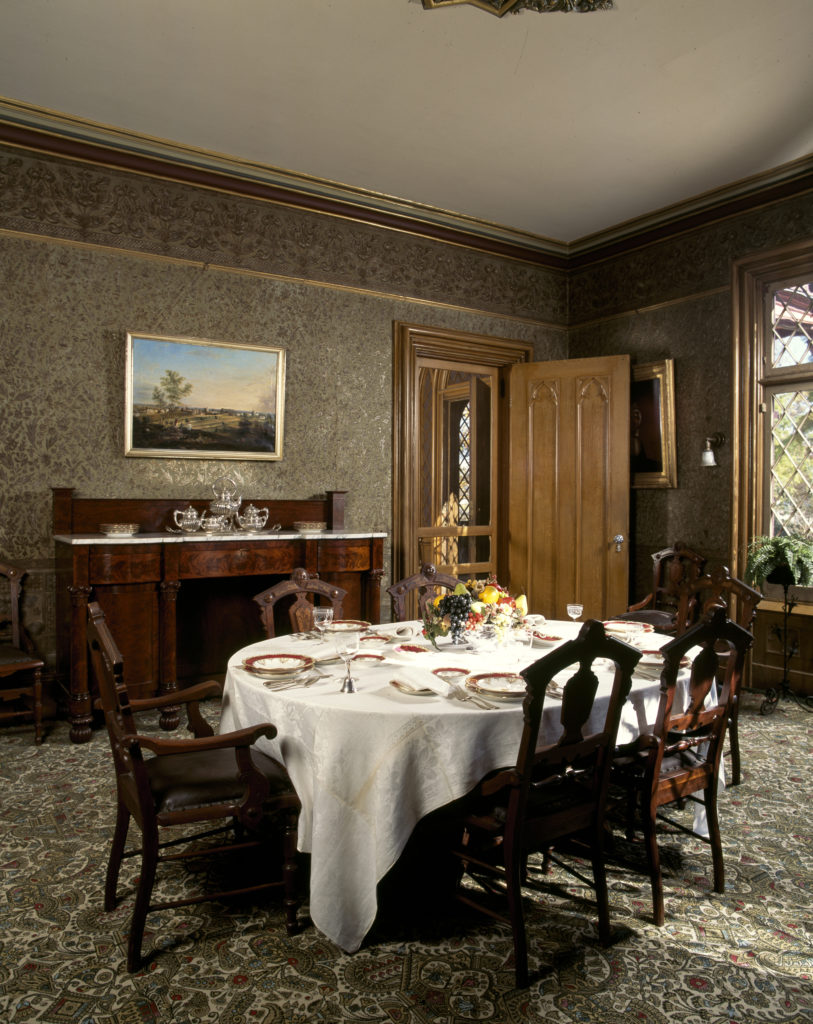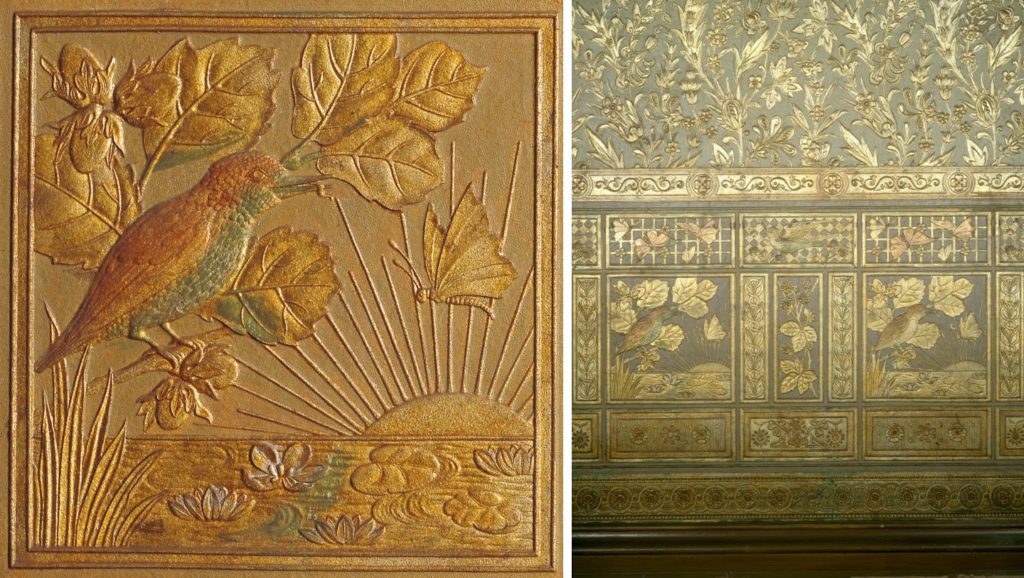 Roseland Cottage
Roseland Cottage
The Dining Room

After the 1880s redecoration, the dining room was an impressive place: the room had a lovely view of the garden, dinner was served on monogrammed French china, new tiles framed the Italian marble fireplace, and Henry Bowen’s portrait, hanging over the mantel, presided. A butler’s pantry had been carved out of the kitchen space when additions were made to the cottage in the 1870s, which may have been when a screen door was added between the hall and dining room.

Perhaps most notably, Lincrusta-Walton was installed in the dining room and the rest of the public rooms as part of the redecoration. The process was developed in England by Fredric Walton in 1877, but Roseland’s Lincrusta was manufactured in the Stamford, Connecticut, factory of Frederick Beck & Co., which held the American patent. The Lincrusta in the dining room, with its combination of natural elements and stylized foliate and geometric decorative motifs is an Aesthetic Movement tour de force. Designers in this period were fearless in their determination to layer pattern, texture, and color.
The picture on the left shows a portion of Lincrusta that was behind a large buffet and so protected from the dulling effects of age, oxidation, and years of cleaning. For more information on Lincrusta, see the sections on Architecture, Style, and Design: Interiors, and Preservation: Interior Preservation.